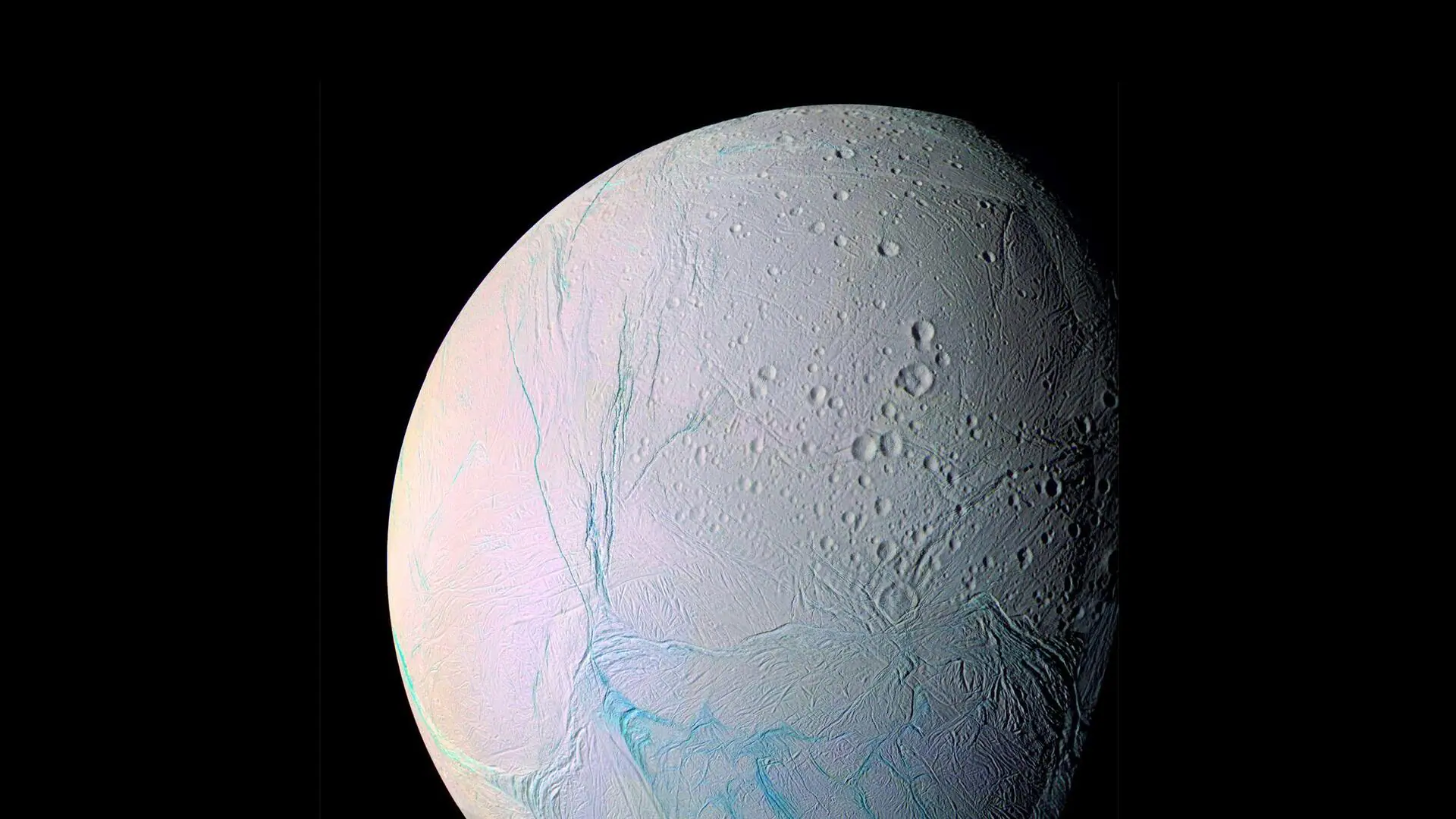Copyright newsbytesapp

A new study led by Oxford University researchers has found significant heat flow at the north pole of Saturn's moon Enceladus. The discovery challenges previous assumptions that heat loss was only occurring at its active south pole. The findings, published in the journal Science Advances, suggest that Enceladus is releasing much more heat than expected from a passive body, strengthening the case for its potential to support life. Enceladus, a highly active moon, is thought to have a global salty subsurface ocean, with heat generated by tidal forces. The combination of liquid water, heat, and essential chemicals makes this ocean one of the most promising places in our solar system for life outside Earth. However, this subsurface ocean can only sustain life if it maintains a stable environment with balanced energy losses and gains. The stability of Enceladus's subsurface ocean is maintained by tidal heating, a process where Saturn's gravity stretches and squeezes the moon as it orbits, generating internal heat. If the moon doesn't gain enough energy, its surface activity could slow down or stop altogether. This could lead to the freezing of its ocean over time. Conversely, too much energy could ramp up ocean activity and change its environment. Until now, direct measurements of heat loss from Enceladus were only recorded at its south pole. However, using data from NASA's Cassini spacecraft, researchers studied the north polar region during deep winter (2005) and summer (2015). They measured how much energy the moon loses from its warm subsurface ocean as heat flows through its icy shell to the frigid surface and radiates into space. The researchers found that the surface at the north pole was warmer than expected, indicating heat leaking from the ocean below. The measured heat flow of 46 +- 4 milliwatts per square meter is about two-thirds of Earth's continental crust heat loss (per unit area). This conductive heat loss totals some 35GW across Enceladus, equivalent to over 66 million solar panels or 10,500 wind turbines. When combined with the previously estimated heat escaping from Enceladus's active south pole, the moon's total heat loss rises to 54GW. This figure closely matches predicted heat input from tidal forces. The balance between heat production and loss strongly suggests that Enceladus's ocean can remain liquid over geological timescales, offering a stable environment where life could potentially emerge. The researchers say the next step is to find out if Enceladus's ocean has been around long enough for life to develop. The study also showed thermal data can be used to estimate ice shell thickness, an important factor for future missions planning to probe Enceladus's ocean. The findings suggest that the ice is 23km deep at the north pole with an average of 25-28km globally, slightly deeper than previous estimates.



